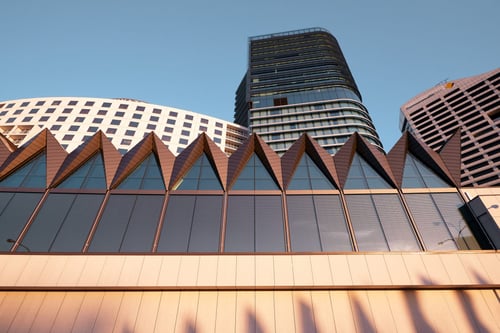The 2019 NCC has now previewed to become effective in May, with a huge swath of changes being made across all sections. In terms of the external wall envelope, these changes have the potential to bring about significant change in wall design and processes into the future.
WHAT SPECIFICALLY IS CHANGING?
For volume 1 of the BCA, the three main areas of change for the external envelope are fire resistance, condensation management and energy efficiency.
FIRE
- Sarking will not be required to be non-combustible, however must be maximum 1mm in thickness with a flammability index not greater than 5.
- A controversial new Fire Safety Verification Method CV4 has been previewed, which provides a list of fire scenarios to be considered by a fire safety engineer when developing a performance solution. The implementation of this has been deferred until May 2020.
- The provision for Bonded Laminates has been retained. This had been proposed to be removed in the draft NCC, however at the time of the publication of the draft the ABCB stated that the removal was specifically to encourage public comment around the clause.
CONDENSATION MANAGEMENT
- Condensation management is a new section in the BCA, requiring condensation not to present a risk to building occupants.
- The verification method FV6 provides for the use of hygrothermic modelling to comply with the clause.
- The Deemed-to-Satisfy clauses require either:
- Pliable building membrane (ie sarking), that is vapour permeable in climate zones 6, 7 and 8 (this includes Melbourne, Canberra and non-coastal areas of Sydney)
- A drained cavity separating the primary water control layer from water sensitive materials
ENERGY EFFICIENCY
- Overall the requirements for energy efficiency have been lifted substantially, for both thermal performance of walls and additionally the building air-tightness.
- External walls having the external cladding and internal lining fixed to the same metal frame now require thermal breaks between the cladding and the frame, as prescribed in J0.5
WHAT IS THIS LIKELY TO MEAN FOR EXTERNAL ENVELOPE DESIGN?
- Deemed-to-Satisfy will be the most common route to compliance for fire performance of external walls, as the membrane concession allows both fire performance and condensation to be addressed as DtS. If a performance solution was to be used to assess fire performance, the combustibility of a sarking membrane would need to be factored into this. Additionally, the Fire Safety Verification Method has not been popularly received in the industry.
- The increased focus around thermal performance and condensation is likely to create more interest in externally installed insulation and rainscreen systems, as seen more typically in Europe. These serve to move the condensation dew point outside the structure, and provide a better insulated wall.
- In areas with higher wind loads or ventilated cavities, traditionally products such as galvanised sheeting have been used in lieu of sarking. The condensation requirements mean this system will no longer be compliant in many applications, and a breathable rigid air barrier or external sheathing board will be required.
If you have any questions around the 2019 NCC and how this will affect your cladding systems, or need assistance in designing a compliant wall build up, please get in touch with our technical team.

.jpg?width=500&name=Fairview_NCC%20(2).jpg)

